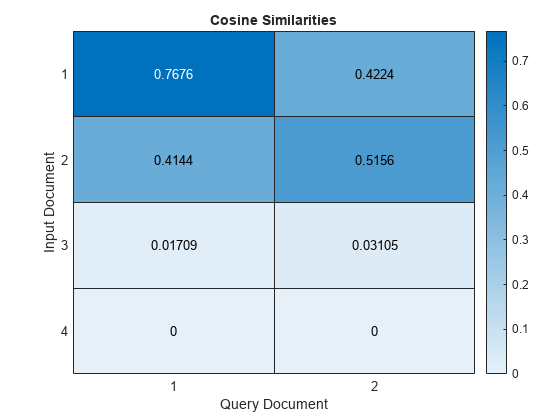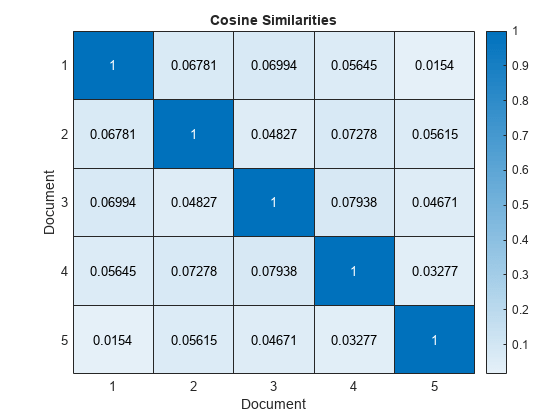cosineSimilarity
Document similarities with cosine similarity
Syntax
Description
similarities = cosineSimilarity(documents)similarities(i,j)
represents the similarity between documents(i) and
documents(j).
similarities = cosineSimilarity(documents,queries)documents and
queries using tf-idf matrices derived from the word counts in
documents. The score in similarities(i,j)
represents the similarity between documents(i) and
queries(j).
similarities = cosineSimilarity(bag)bag. The score in similarities(i,j) represents
the similarity between the ith and jth documents
encoded by bag.
similarities = cosineSimilarity(bag,queries)bag and queries using tf-idf matrices
derived from the word counts in bag. The score in
similarities(i,j) represents the similarity between the
ith document encoded by bag and
queries(j).
similarities = cosineSimilarity(M)M. The score in similarities(i,j) represents the
similarity between M(i,:) and M(j,:).
similarities = cosineSimilarity(M1,M2)M1
and M2. The score in similarities(i,j) corresponds
to the similarity between M1(i,:) and
M2(j,:).



